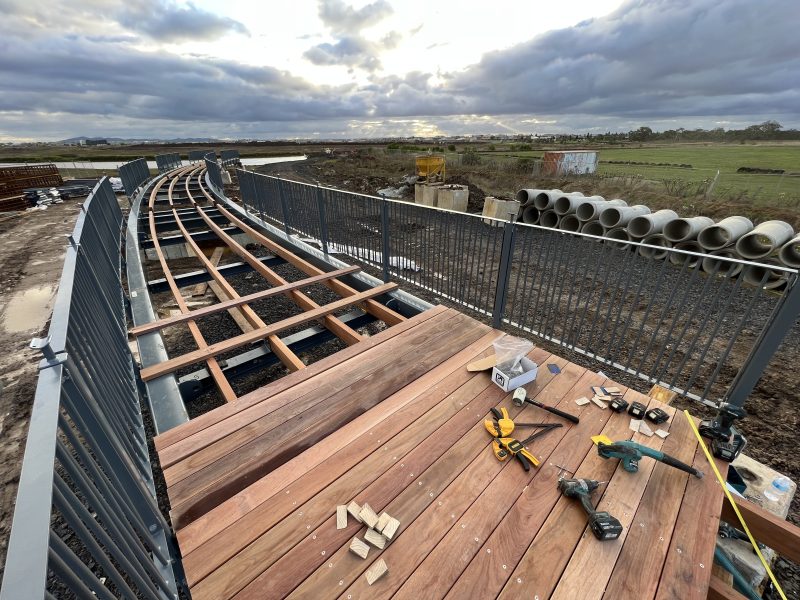
Bridge construction by BridgeCon in Victoria integrates foundation precision and stress-resilient design for strong, reliable transport structures.
As a civil contractor, BridgeCon understands that a well-built bridge facilitates uninterrupted connectivity across diverse terrains by employing calculated engineering solutions and robust materials. Reinforced concrete, structural steel, and site-specific construction models support design integrity and ensure project outcomes satisfy both safety and longevity standards.
Foundations That Define Bridge Construction
Structural durability begins beneath the surface. Ground characterisation through geotechnical drilling and laboratory testing identifies soil behaviour, groundwater levels, and settlement risk that affect long-term bridge performance.
Piling systems are designed to match site-specific ground resistance and topographic variation. Driven piles stabilise soft terrain, while bored and screw piles offer flexibility in compacted or layered soils, reducing the risk of lateral displacement.
Reinforced pile caps and abutments connect foundation elements into a single load path. These structures ensure consistent force transfer to the subgrade, allowing the superstructure to respond predictably to both static and moving loads.
Load-Bearing Solutions in Bridge Construction
Design methods in bridge construction in Victoria incorporate calibrated load systems to address the demands of both heavy and continuous usage. These systems integrate material strength, motion control, and load distribution for optimal structural efficiency.
• Pre-tensioned Concrete Beams: Internal stress is applied to increase stiffness and reduce mid-span deflection under live loading. This technique improves span capability without adding excessive weight to the structure.
• Steel Box Girders: Box shapes provide high torsional strength, especially in curved or elevated alignments. Their use maintains stability and minimises rotational deformation during directional shifts in traffic flow.
• Segmental Bridge Construction: Individual segments are cast off-site or in-situ and assembled with precision. This method supports complex geometries and minimises on-site disruption in sensitive or constrained locations.
• Expansion Joints: Interfaces between deck sections accommodate material expansion and contraction. These joints prevent surface cracking and structural misalignment during seasonal thermal changes.
• Elastomeric Bearings:
These elements absorb movement in multiple directions, allowing for rotation, translation, and vibrational damping. Their function protects the bridge deck from shear and bending stresses caused by frequent traffic.
• Post-Tensioned Systems: Steel tendons are tensioned after concrete placement to resist tensile forces. This technique enhances structural integrity across longer spans and under high load conditions.
• Composite Materials: Hybrid systems combine concrete with steel or fibre-reinforced polymers for improved durability. These materials offer resistance to corrosion, especially in marine or industrial environments.
• Load Simulation and Modelling: Digital simulations forecast performance under dynamic and static conditions. The insights optimise component selection and structural arrangement to reflect real-use scenarios.
Enduring Outcomes Through BridgeCon
Through effective integration of design logic, site preparation, and structural execution, BridgeCon ensures the longevity and safety of bridge construction in Victoria. We apply precision and foresight to achieve outcomes aligned with client and community expectations.
Reach us for technically refined bridge infrastructure that meets Victoria’s structural and site-specific construction requirements.
Read this content for more insightful details about the topic: Innovations in Bridge Engineering: Forging the Path to the Future
Optimized by: Netwizard SEO

